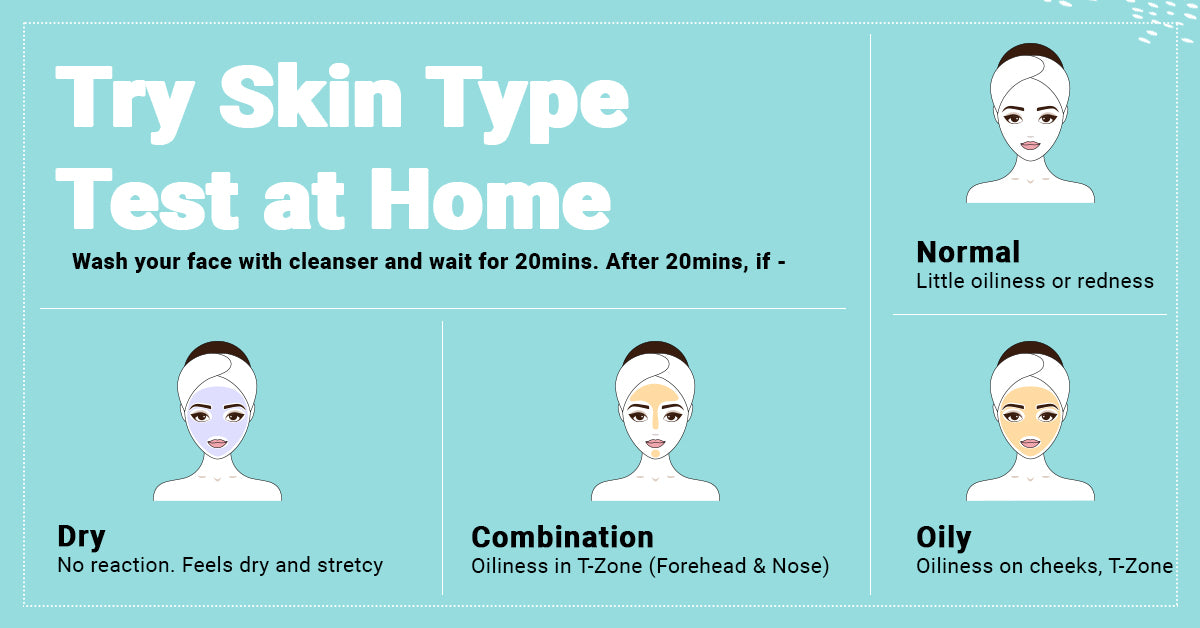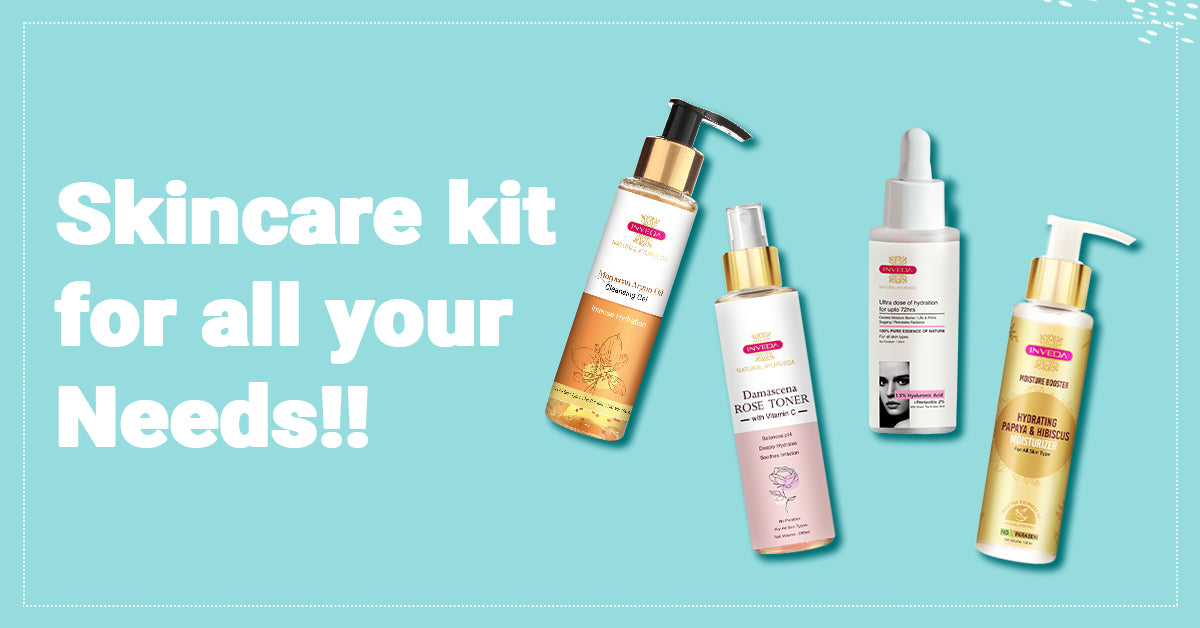Understanding your skin type is the foundation of a proper skincare routine. Your skin type determines which products will work best for you, how you should care for your skin, and even how your skin might react to different environmental factors. While many people visit dermatologists for a professional assessment, you can also determine your skin type from the comfort of your home. In this blog post, we'll guide you through easy at-home methods to help you identify your skin type accurately.
Learn: Why Knowing Your Skin Type Matters
Understanding your skin type is crucial because it helps you make informed decisions about the products you use on your skin. Using the wrong products for your skin type can lead to various issues, including breakouts, excessive dryness, and irritation. By identifying your skin type, you can tailor your skin care routine to address your specific needs, leading to healthier and more radiant skin.
The Four Common Skin Types
Before we dive into the at-home tests, let's briefly discuss the four most common skin types:
- Normal Skin: Balanced skin with minimal imperfections. Not too oily or too dry.
- Oily Skin: Excess oil production often leads to shine, enlarged pores, and acne.
- Dry Skin: Lacks moisture, resulting in flakiness, tightness, and potential sensitivity.
- Combination Skin: A combination of different skin types on various areas of the face. Typically, the T-zone (forehead, nose, and chin) is oilier, while the cheeks may be dry.

Easy At-Home Methods to Determine Your Skin Type
-
The Bare-Faced Test:
- Start with a clean face. Gently cleanse your skin with a mild, pH-balanced cleanser.
- Pat your face dry with a clean towel, avoiding any friction.
- Leave your skin bare, without applying any moisturizers, serums, or treatments.
- After a few hours, observe how your skin feels. Does it feel tight, flaky, or rough? If so, you likely have dry skin. If it appears comfortable without any noticeable dryness or excessive shine, you may have normal skin. If your T-zone (forehead, nose, and chin) looks oily while your cheeks remain dry, you might have combination skin.
-
The Blotting Paper Test:
- In the morning, before washing your face, let your skin rest for a few hours or after a normal day.
- Take a piece of blotting paper or a tissue and gently press it against different areas of your face, such as your forehead, nose, chin, and cheeks.
- Observe the blotting paper. If it picks up a lot of oil, especially in the T-zone, you likely have oily skin. If it shows minimal oil but not too dry, you may have normal or combination skin. If there's very little to no oil on the blotting paper, you probably have dry skin.
-
The Feeling Test:
- When cleansing your face, wait for an hour without ue any products.
- Pay attention to how your skin feels. If it feels tight, itchy, or uncomfortable, you may have dry skin. If it feels comfortable and smooth, you likely have normal skin.When you notice any oiliness or shine, particularly in the T-zone, you might have oily or combination skin.
-
The Pore Test:
- Look closely at your pores in a well-lit area, preferably with a mirror.
- When your pores appear small and barely noticeable, you likely have normal or dry skin. If they look enlarged, especially in the T-zone, you probably have oily or combination skin.
Create: Customizing Your Skincare Routine
Once you've determined your skin type, it's essential to choose products that cater to your specific needs. Here's a brief guide for each skin type:
- Normal Skin: You're in luck; you can use a wide range of products. Focus on maintaining your skin's balance with a gentle cleanser, a moisturizer, sunscreen, and occasional exfoliation. Make sure to add hydrating ingredients in your skin care products for healthier skin.
We Suggest: Inveda Beginners Skincare Routine Kit
- Oily Skin: Opt for oil-free, non-comedogenic products. Use a gentle cleanser, a lightweight, oil-free moisturizer, and a mattifying sunscreen. Consider adding salicylic acid or lactic acid to your routine to manage excess oil and acne.
- Dry Skin: When Look for hydrating and moisturizing products. Use a gentle, hydrating cleanser, a rich moisturizer, and sunscreen. Incorporate hydrating serums and oils to combat dryness. Hyaluronic Acid or Kumkumadi Tailam is ideal to combat skin issues associated with dry skin.
We Suggest: Inveda Kumkumadi Tailam Combo, Inveda Vitamin E Skincare Routine Combo
- Combination Skin: While use a gentle cleanser and customize your routine for different areas of your face. Focus on oil control in the T-zone and hydration for the cheeks. Don't forget sunscreen.

Let’s Conclude…
When Knowing your skin type is the first step to achieving healthy and radiant skin. By following these easy at-home methods, you can accurately identify your skin type and tailor your skincare routine to address its unique needs. Remember that your skin type can change over time due to various factors, so it's a good idea to periodically reassess and adjust your skincare regimen accordingly. Always consult with a dermatologist for professional guidance When you have specific skin concerns or conditions. When the right skincare routine, you can look and feel your best, no matter your skin type.
However Inveda is a renowned natural Ayurveda skincare brand that has carved a niche for itself in the beauty and wellness industry. This brand beautifully merges the wisdom of Ayurveda with modern skincare innovations, offering a holistic approach to beauty. Our dedication to preserving the essence of Ayurveda while adapting it to the needs of the modern consumer has garnered it a loyal customer base. While our commitment to purity, authenticity, and holistic well-being makes us a standout player in the world of natural skincare, offering a range of products that promote healthy, radiant skin through the time-tested wisdom of Ayurveda.
Shop here: www.inveda.in










